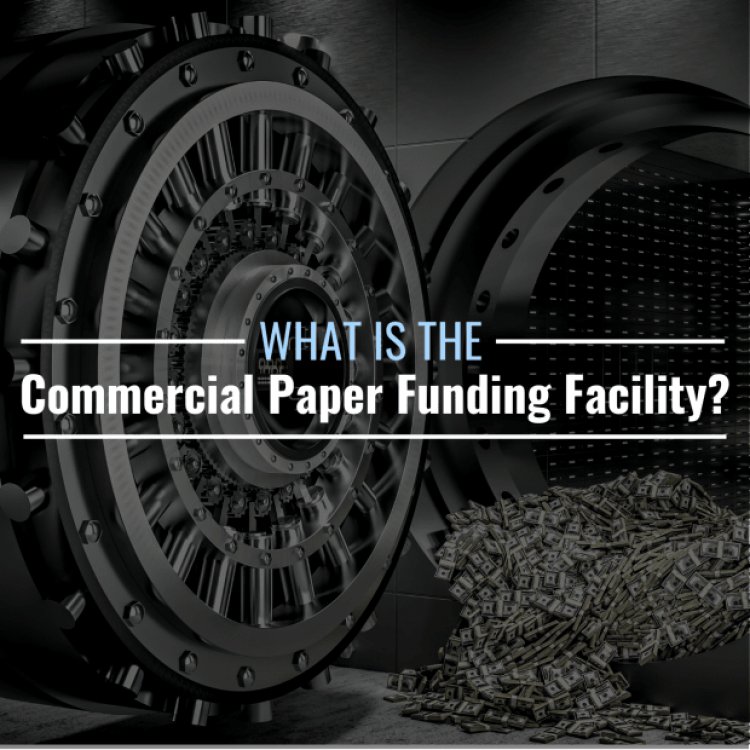What Is the Commercial Paper Funding Facility? Definition & History
What Is the Commercial Paper Funding Facility?The commercial paper funding facility is the Federal Reserve’s stopgap tool aimed at maintaining liquidity in the U.S. commercial paper market. The temporary facility typically buys unsecured and asset-backed commercial paper with three-month maturities ...


What Is the Commercial Paper Funding Facility?
The commercial paper funding facility is the Federal Reserve’s stopgap tool aimed at maintaining liquidity in the U.S. commercial paper market. The temporary facility typically buys unsecured and asset-backed commercial paper with three-month maturities from highly rated issuers.
What Does the Commercial Paper Funding Facility Do?
The facility is designed to prevent disruption to financial markets and the economy because commercial paper is a source of short-term funding for commercial banks, other financial institutions, and many corporations. Commercial paper is used to finance loans, buy inventory, and pay for other day-to-day operations.
The financial crisis of 2007–2008 and the COVID-19 pandemic pushed the Fed to act literally as lender of last resort by putting the commercial paper funding facility into action.
A Brief History of the Commercial Paper Funding Facility
As of 2023, the commercial paper funding facility has undergone two iterations.
First Iteration: Financial Crisis of 2007–2008 (October 27, 2008 to February 1, 2010)
Concerns about the credit ratings of asset and mortgage-backed securities highlighted the collapse of securitization and the financial crisis of 2007–2008. Asset-backed commercial paper (commercial paper backed by financial assets as collateral) accounted for more than 45% of the commercial paper market between 2001 and 2007. At one point in August 2007, the value of the U.S. commercial paper market peaked at $2.2 trillion, of which ABCP accounted for more than 52 percent.
As the housing market started to collapse in the summer of 2007, the asset-backed securities used on ABCP as collateral became a concern, and issuers of ABCP experienced difficulty in selling the commercial paper. Money market investors, such as money market mutual funds, were typically the biggest investors of commercial paper, but holding ABCP—and commercial paper in general—was becoming more risky, so they diverted their investment to government securities, perceived as a safer fixed-income alternative.
Contagion spread following the Lehman Brothers collapse in September 2008, and investors sought to get their money back following the maturities of commercial paper. These redemptions, however, raised concerns about issuers having enough money to meet such demand, with requests for redemption amounting to more than $117 billion at one point. At the same time, commercial paper issuers were receiving requests for overnight maturities instead of longer periods, and more than 75% of commercial paper financing, according to the Fed, was being rolled over each day.
If money market mutual funds shirked from commercial paper, which was a source of short-term fundraising for many companies, the threat of possible bankruptcies loomed, and monetary authorities wanted to avoid that.
The Fed, in response, created the commercial paper funding facility as a liquidity backstop, and used a special purpose vehicle that would purchase commercial paper with maturities of 90 days. The measure provided issuers enough time to roll over their borrowings and prevented overnight rollovers—helping to stabilize the U.S. commercial paper market. At one point, in January 2009, the Fed’s SPV held more than $348 billion in paper.
Second Iteration: COVID-19 Pandemic (April 14, 2020 to March 31, 2021)
The pandemic unleashed havoc on financial markets and economies in the U.S. and globally in March 2020, and there were concerns that investors would be reluctant to purchase commercial paper, an important source of short-term funding for many banks and nonfinancial companies.
Similar to the financial crisis of 2007–2008, investors were hesitant to purchase longer-term paper and wanted shorter-term debt. Once again, the Fed opened the temporary facility that gave time for issuers to roll over their debt without having to worry about investors’ demands for redemption, and the central bank bought paper with 90-day maturities.
At one point in May 2020, the Fed held as much as $4.3 billion in commercial paper.
How Does the Commercial Paper Funding Facility Work?
Issuers of commercial paper tend to have high credit ratings and must meet eligibility requirements with the Fed, including having sold commercial paper in the 12 months prior to the facility’s start of operations. Issuers sell their paper to the Fed’s SPV via designated dealers, which include the central bank’s primary dealers and other securities firms selected by the central bank.
Does the Fed Make Money From the Commercial Paper Funding Facility?
The Fed makes money from transactions by setting interest rates higher than normal. For example, after the facility ceased operations in 2021 during the pandemic, it recorded $49.1 million in profits that were shared with the Fed and the Department of Treasury.
What Is Rollover Risk?
When investors seek to redeem their investment from commercial paper, and issuers can’t find new investors to take in new commercial paper to cover those redemptions, there is the risk that the issuer won’t be able to roll over old debt into new debt.
What's Your Reaction?



























































